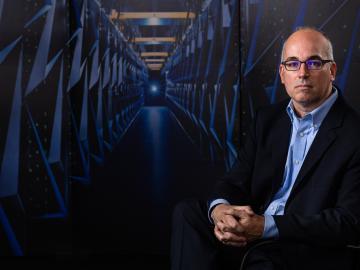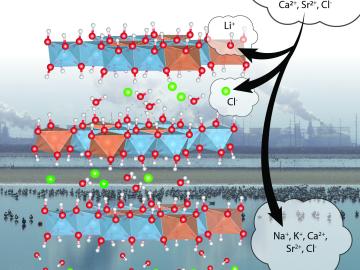Filter News
Area of Research
- (-) Clean Energy (69)
- Advanced Manufacturing (4)
- Biology and Environment (17)
- Climate and Environmental Systems (2)
- Computer Science (2)
- Energy Sciences (1)
- Fusion and Fission (5)
- Fusion Energy (5)
- Isotopes (4)
- Materials (50)
- Materials for Computing (5)
- National Security (12)
- Neutron Science (27)
- Nuclear Science and Technology (22)
- Nuclear Systems Modeling, Simulation and Validation (2)
- Quantum information Science (3)
- Supercomputing (38)
News Topics
- 3-D Printing/Advanced Manufacturing (17)
- Advanced Reactors (3)
- Artificial Intelligence (3)
- Big Data (2)
- Bioenergy (9)
- Biology (1)
- Biomedical (2)
- Biotechnology (1)
- Chemical Sciences (2)
- Clean Water (1)
- Climate Change (6)
- Composites (1)
- Computer Science (9)
- Coronavirus (7)
- Cybersecurity (1)
- Decarbonization (1)
- Energy Storage (16)
- Environment (17)
- Exascale Computing (1)
- Grid (6)
- High-Performance Computing (1)
- Isotopes (1)
- Machine Learning (4)
- Materials (2)
- Materials Science (8)
- Mathematics (1)
- Microscopy (3)
- Molten Salt (1)
- Nanotechnology (4)
- Neutron Science (4)
- Nuclear Energy (2)
- Physics (1)
- Polymers (3)
- Quantum Science (2)
- Summit (2)
- Sustainable Energy (20)
- Transformational Challenge Reactor (2)
- Transportation (13)
Media Contacts
A team of scientists led by Oak Ridge National Laboratory found that while all regions of the country can expect an earlier start to the growing season as temperatures rise, the trend is likely to become more variable year-over-year in hotter regions.

Researchers at ORNL demonstrated that sodium-ion batteries can serve as a low-cost, high performance substitute for rechargeable lithium-ion batteries commonly used in robotics, power tools, and grid-scale energy storage.

Energy storage startup SPARKZ Inc. has exclusively licensed five battery technologies from the Department of Energy’s Oak Ridge National Laboratory designed to eliminate cobalt metal in lithium-ion batteries. The advancement is aimed at accelerating the production of electric vehicles and energy storage solutions for the power grid.

Peter Wang is focused on robotics and automation at the Department of Energy’s Manufacturing Demonstration Facility at ORNL, working on high-profile projects such as the MedUSA, a large-scale hybrid additive manufacturing machine.

After several years in the private sector exploring the unknown origins of neurodegenerative brain disorders such as Alzheimer’s, Chris Ellis thinks one of the keys to solving the mystery is at Oak Ridge National Laboratory: the world’s most powerful supercomputer.

The formation of lithium dendrites is still a mystery, but materials engineers study the conditions that enable dendrites and how to stop them.

In the quest for domestic sources of lithium to meet growing demand for battery production, scientists at ORNL are advancing a sorbent that can be used to more efficiently recover the material from brine wastes at geothermal power plants.

Oak Ridge National Laboratory researchers created a geothermal energy storage system that could reduce peak electricity demand up to 37% in homes while helping balance grid operations.

To better determine the potential energy cost savings among connected homes, researchers at Oak Ridge National Laboratory developed a computer simulation to more accurately compare energy use on similar weather days.




